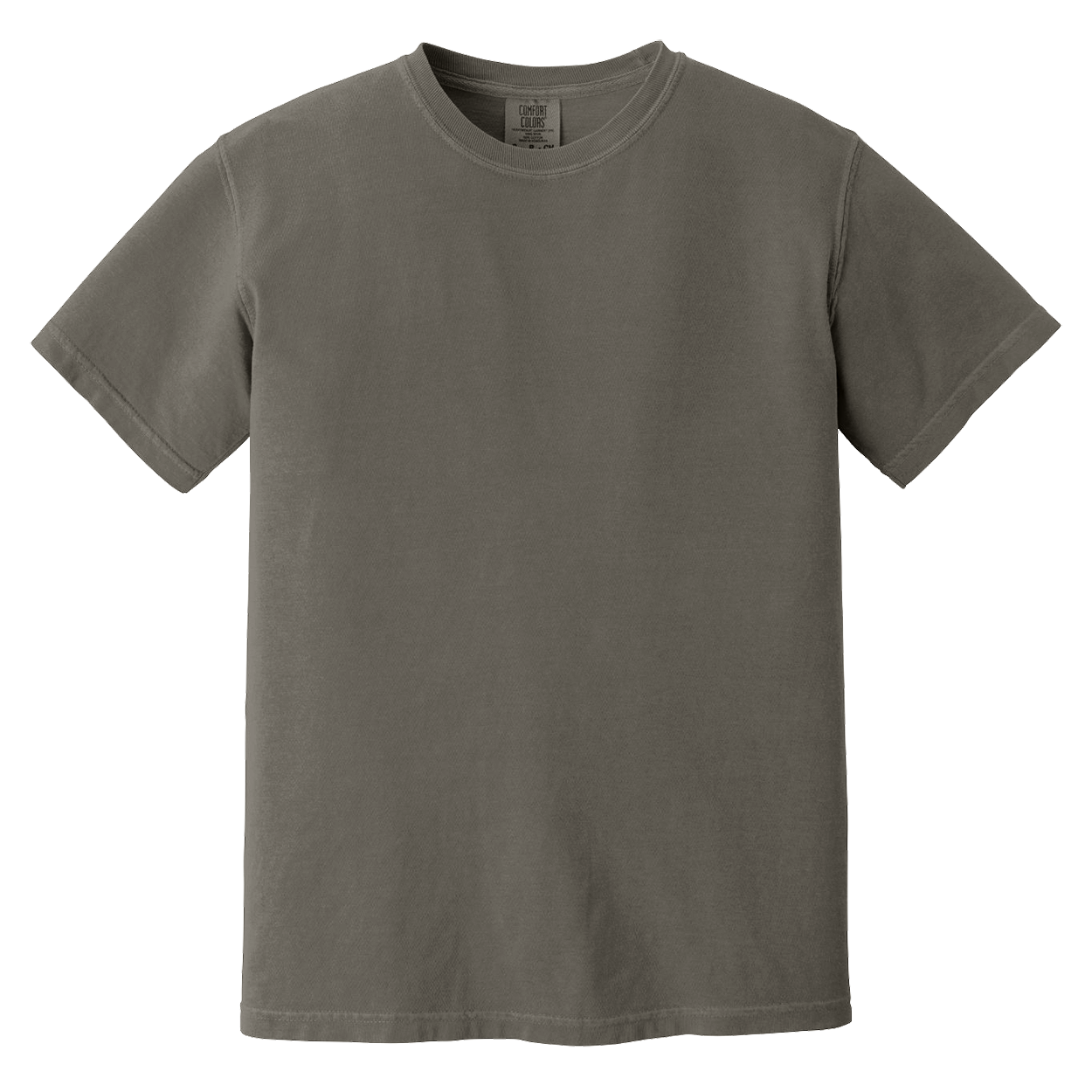In recent years, the promotional merchandise industry has seen a significant shift. As consumers become more mindful of sustainability and practicality, businesses have begun focusing on creating merchandise that serves a real purpose in everyday life. Rather than opting for one-time-use items like keychains or t-shirts, brands are now prioritizing functional products that their customers will use regularly. This not only leads to increased brand visibility but also helps create a deeper, more lasting connection with customers.
Functional promotional products are not just a trend; they align with broader consumer behavior changes. People today want items that have tangible value, whether it's a reusable water bottle, a multi-purpose bag, or even a tech gadget.
This shift toward useful merch also plays into the growing desire for sustainability, as these items are often more durable and eco-friendly compared to traditional disposable swag. By providing useful merchandise, brands show that they care about their customers’ needs and the environment, creating a positive brand association.
In addition, useful merch encourages customers to engage with a brand consistently. When people use an item regularly, such as a branded phone charger or reusable shopping bag, they’re more likely to remember the brand, increasing long-term customer loyalty. As companies strive to differentiate themselves in a crowded marketplace, providing functional promotional products can be an effective strategy to stand out and build a meaningful relationship with the audience.
What Is Utility Merch? Understanding the Concept Behind Useful Promotional Items
Utility merch refers to branded promotional items that serve a clear and practical function in the daily lives of consumers. Unlike novelty giveaways that often end up in drawers or landfills, useful merch is designed to be integrated into regular routines. These products offer value beyond the branding, which makes them more likely to be retained, used, and appreciated.
Common examples of utility merch include:
Reusable drinkware (tumblers, coffee mugs, water bottles)
Phone accessories (chargers, power banks, stands)
Office supplies (notebooks, pens, calendars)
Reusable shopping bags and tote bags
Health and wellness items (sanitizer kits, resistance bands)
The goal is to create a strong association between the product’s utility and the brand’s identity. When a customer uses a branded item daily, your logo and messaging remain top-of-mind, creating a subconscious brand loyalty that outlasts typical advertising impressions.
Why Functional Merch Drives Higher Brand Recall and Engagement
The power of functional merch lies in its ability to stay top-of-mind with customers. When people receive a promotional product that is useful to them, they are more likely to remember the brand associated with it. For example, if someone receives a branded notebook they use daily at work, it will not only keep the brand in their thoughts but also lead to conversations and potential referrals. In essence, useful merchandise is more likely to lead to brand recall because it provides utility beyond just a one-time giveaway.
According to studies, 83% of people like receiving promotional products, and 79% of people can recall the branding on those items. When these items are functional, such as a quality pen or a laptop bag, customers are likely to use them frequently, increasing their exposure to the brand over time. This consistent exposure to branded merchandise builds familiarity, trust, and long-term engagement, all of which are essential for customer loyalty and retention.
In addition to being remembered, functional merch is also more likely to engage customers in a positive way. When people use an item regularly, it reinforces the brand message and helps create a deeper connection. This type of merchandise serves as a constant reminder of the brand’s values and benefits, encouraging customers to engage more actively with the brand, whether through online reviews, social media mentions, or repeat purchases.
Aligning Your Brand Message with Utility: It’s More Than Just a Logo
Brand alignment goes far beyond slapping a logo on a popular product. To truly resonate, the utility merch must reflect the core values and mission of the business. For instance, a fitness company should consider branded resistance bands or protein shaker bottles. An eco-conscious brand might focus on bamboo utensils, reusable grocery bags, or stainless steel straws.
A great utility merch campaign begins by asking: "What does our audience need in their daily life?" Then, determine how your brand can meet that need through thoughtful, functional giveaways. By doing so, you ensure that your merch not only serves a purpose but also strengthens brand perception and credibility.
Incorporating storytelling into merch design is another powerful strategy. For example, including a short message or QR code that links to a sustainability pledge or product impact story deepens the emotional connection and supports consistent brand messaging.
Top Trending Useful Merch Items for 2025
The world of promotional merchandise is constantly evolving, with new trends emerging every year. In 2025, some of the most popular and functional merch items include:
Reusable Water Bottles: These items are both eco-friendly and practical. Brands can offer high-quality, branded water bottles that customers will use daily.
Portable Power Banks: With the rise of mobile device usage, power banks have become essential. A branded power bank can keep your brand top-of-mind while helping your customers stay connected.
Tech Accessories: Items like wireless chargers, mouse pads, and Bluetooth speakers have gained popularity, especially in tech-centric industries.
Eco-Friendly Tote Bags: Reusable bags are a staple in sustainable merchandise. They are practical, and their wide use makes them perfect for brand exposure.
Customized Stationery: Notebooks, pens, and planners are simple yet effective items that can be branded for maximum exposure, especially in corporate settings.
These trending items not only provide utility but also help reinforce your brand’s identity. Offering practical, eco-friendly, or tech-related products helps position your business as a brand that cares about both functionality and sustainability. By staying on top of trends, you can ensure that your promotional merchandise resonates with your target audience and stands out in a crowded marketplace.
How to Choose the Right Useful Merch for Your Audience
Selecting the right utility merch for your audience requires careful consideration of your customer base, their lifestyle, and your brand’s overall message. The first step is identifying your target demographic. If your audience is tech-savvy, consider providing items like branded phone chargers, wireless headphones, or portable speakers. For younger, active consumers, products like gym towels, sports bottles, or yoga mats may be more appropriate.
Understanding your audience’s interests and needs is crucial in ensuring that your merchandise serves a purpose. For instance, a company selling eco-friendly products might opt for branded reusable coffee cups or stainless steel straws. Similarly, a company in the corporate space might find success with branded planners, ergonomic desk accessories, or custom mouse pads. Choosing products that align with your audience’s daily activities ensures that they’ll actually use the item, increasing the likelihood of long-term brand exposure.
Additionally, it’s important to evaluate the practicality and durability of the items you choose. Low-quality items, even if functional, can reflect poorly on your brand. Invest in high-quality products that will last, as this will not only enhance customer satisfaction but also increase the perceived value of your brand. By selecting functional, durable, and relevant items, you demonstrate a commitment to quality and customer satisfaction.
Utility and Sustainability: A Powerful Merch Combo
Sustainability and utility go hand-in-hand when it comes to effective branded merchandise. Consumers today are increasingly looking for ways to reduce waste and make eco-conscious choices, which makes sustainable utility merch an attractive option. Products like reusable coffee cups, stainless steel straws, and recycled tote bags offer consumers the chance to reduce their carbon footprint while still receiving useful, functional items.
Brands that prioritize sustainability in their promotional merchandise are also more likely to appeal to the growing number of environmentally-conscious consumers. By offering products that are durable, recyclable, or made from sustainable materials, businesses show that they care about both the planet and their customers. This not only aligns with the values of modern consumers but also enhances brand reputation and loyalty.
Incorporating sustainability into your merchandise strategy also allows you to tap into the global push for greener business practices. Whether it’s by using eco-friendly packaging, offering products made from recycled materials, or choosing items that help reduce waste, businesses that focus on sustainability can enhance their public image and appeal to a wider audience.
Case Studies: Brands That Nailed Their Functional Merch Strategy
Mailchimp’s “Freddie’s Favorites” Merch Line
Freddie, the MailChimp mascot. Image: creative.mailchimp.com.
Mailchimp, the email marketing platform, launched a branded merchandise campaign called "Freddie's Favorites", a curated line of useful and on-brand items distributed at trade shows, sent to influencers, and offered to top-tier customers. Rather than rely on generic swag like pens or stress balls, Mailchimp focused on high-utility products that reflected its quirky, creative, and design-forward identity.
Key Items Included:
Custom socks with the Freddie (Mailchimp's mascot) face
Enamel pins for backpacks and jackets
Reusable canvas tote bags with clever, witty slogans
Notebook + pen sets with branded illustrations and creative prompts
Freddie-branded water bottles for everyday use
Impact and Results:
Extended Brand Visibility: Customers and fans were regularly posting their Mailchimp merch on Instagram, TikTok, and Twitter using the hashtag #FreddieSwag.
Customer Engagement Boost: After the release of this merch line, Mailchimp saw a notable uptick in user engagement—specifically a 21% increase in social interactions and a 15% increase in email open rates within the campaign cohort.
Community Building: The merch gave Mailchimp users a way to signal affiliation and pride in being part of the ecosystem. This helped foster brand loyalty and word-of-mouth referrals.
Why It Worked:
Every item was intentional and functional, not just branded.
The merch was aesthetic and Instagrammable, helping it spread organically.
Mailchimp used its brand personality (creative, quirky, smart) to guide every product choice, making the campaign cohesive and memorable.
Takeaway for Your Business:
If you're a merch printing company looking to show clients what's possible, Mailchimp’s campaign is a great example of how useful, brand-aligned merch can spark engagement, community, and loyalty. Use their approach as a benchmark for advising your own clients on crafting functional and effective promotional product lines.
Getting Started: Tips for Launching Your First Useful Merch Campaign
If you're new to launching a utility merch campaign, start by outlining your goals: Are you looking to improve retention, generate leads, or increase brand awareness? Having a clear objective helps narrow down product choices and messaging.
Steps to launch your first campaign:
Identify your target audience and needs
Choose utility-based items that align with your brand values
Partner with a reliable merch vendor who offers customization
Design your artwork with both branding and practicality in mind
Decide on your distribution strategy (e.g., events, direct mail, online orders)
Track your campaign’s performance using metrics such as customer retention rates, social media mentions, and redemption of linked offers. Analyzing these KPIs will help refine your merch strategy for future campaigns.
Conclusion:
Utility is the Future of Merch Marketing
The demand for useful merch is not just a passing trend, it's a response to evolving consumer expectations. In a world where every brand is competing for attention, offering something practical and thoughtful gives you a tangible edge. Utility merch allows your brand to be present in everyday life, creating lasting impressions and genuine value.
By aligning your promotional products with your audience's needs and values, you reinforce your brand identity and enhance your marketing ROI. Add sustainability into the mix, and you demonstrate responsibility, relevance, and forward thinking.
Now is the time to invest in useful merch that goes beyond visibility and into meaningful brand interaction. Whether you're a startup or an enterprise brand, function-forward merchandise will help you connect, convert, and grow.
Looking for The Best Merch printer?
send us an e-mail at quotes@familyindustriesla.com, or give us a call at 323.227.1547 and we'd be happy to help.
Our showroom at 2755 Fruitdale Street, Los Angeles, CA 90039 is open by appointment only from 10 am - 4 pm Monday through Friday.
FOLLOW US!








































